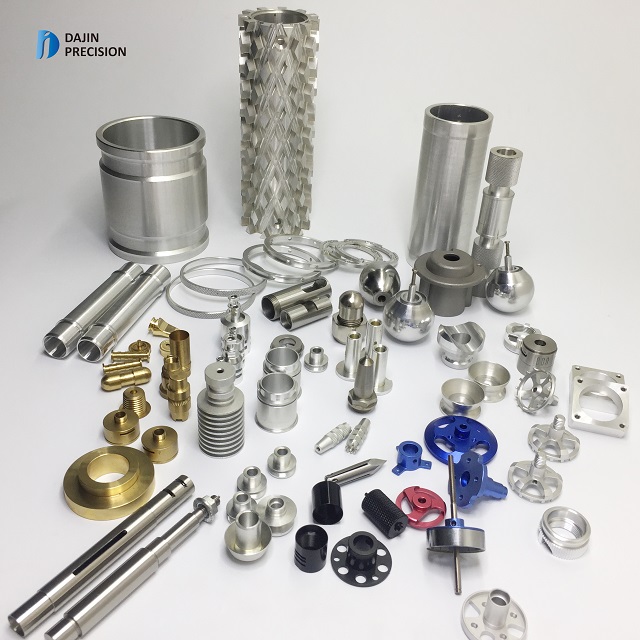How to Reduce the CNC Turning Machining Cost - Tips of Minimizing CNC Parts Prices
There are many elements that influence the CNC turning cost and last parts prices, whether you want to create an individual prototype or obtain mass identical CNC products, the priority we should take first is CNC machining cost reduction and optimizing the design. Check out the cost driver and tips for minimizing CNC parts prices.

Factors Affecting CNC Machining & Turning Cost
Before discussing the CNC parts prices reduction, we should find the factors that affect CNC machining cost.
1. Materials. The cost of raw materials would influence the prices of CNC machined parts directly and it also related to the difficulties of machining,
2. Quantities. The amount of units of component CNC machine produces affects the cost of each unit, the larger the quantities, the lower the unit cost.
3. Design. The geometry, specification, and parameters of the part will affect the types and numbers of processing machines needed, which in turn affect the CNC machining costs.
4. Machining time. The most overweight factor should be the machining time, generally, the longer the machining process takes, the higher the cost the part needs. Actually, machining times will be different for different materials and designs machining. Similarly, the shorter delivery time may be more expensive than a longer shipped one.
How to Reduce or Minimize the CNC Machining Cost & CNC Parts Prices?
In view of these factors affecting CNC turning cost, we can think over some measures to reduce and control the product budget. The core of cost-saving is to minimize the actual time it takes to machine your part.
1. Choose the best material
Not only the budget of materials but machinability will affect the cost, there are some points you should know:
- Even though material is cheaper, if it's more difficult to machine, this may raise the final price to a higher level.
- Generally, the softer materials are easier to machine and need fewer tools, so they will take less time and complete the process faster. Figure out the strength requirements of the product to ensure choose the possible softest material.
- Special materials that require additional safety precautions, processing steps or other resources can also increase production costs.
- Aluminum is usually cheaper than some other common metals like brass, copper, stainless steel, bronze.
- For metals, brass C360 and Aluminum alloys have high machinability and can be processed easily, POM is the easiest plastic to machine. ABS has both low budget and great processibility.
2. Reasonable distribution of each processing quantity
- If you require an amount of the same CNC parts, when conditions permit, the same programming and fixtures can be used at one time to a machine as many workpieces as possible to minimize the time for changing tools.
- CNC machining is usually the most cost-effective when the quantity is less than 10000.
3. Consider each aspect when designing
- Try to avoid thin-wall parts. Thin walls would cause distortion and make it difficult to maintain tolerances. They also cause vibrations and slow down the machine. Both will result in an additional cost of machine and operator time. The advice is to apply thickness for metal parts larger than 0.8mm, for plastics larger than 1.5mm.
- Do not specify tolerances unless necessary. Not all parts need clear defined tight tolerances, but unnecessary ones will increase the cost, specified tolerances require more setup and inspection, which is especially difficult to achieve on internal features. Standard tolerances (±0.125 mm or higher) are sufficient for most non-critical features.
- Try to avoid too much complex geometry. Sophisticated parts are more difficult to machine as it takes multiple tools, procedure, programming, setup and longer time. You can consider splitting a complex part into several independent assemblies that can be connected together after machining.
- Too small radius is not suggested. A small cutting radius results in the poor surface finish of CNC turning parts. Larger radius can be processed faster and produce a smoother surface. The turned parts radius should be 0.4 mm or higher.
- Reduce surface treatment. Surface finishes like Polishing, Passivating, Color anodized, Chrome plating add extra processes, especially multiple treatments on the same part, evaluate the design carefully to reduce multiple surface finishes and avoid unnecessary ones.
- Minimize internal cavities. Designing a deep cavity can take many hours of machining to remove more materials of the block to create a cavity, which can lead to a waste of material and difficult to clean chips. The elongated tools needed to make these cavities can also be easily fractured. Keep the length of the part up to four times the depth of the part. When the cutting depth is 2-3 times the diameter of the cavity, they are in the best condition.
- Keep rounded internal corners. CNC machining tools can leave rounded corners and the larger the radius, the less the materials need to be removed, so as to save the time for changing tools and machining. Use an inside corner radius that has a length: diameter ratio of 3:1 or less.
- Use standard drill sizes. Please notice the decimal places when involves sizes.
- Minimize the machine setup and small features.
4. Choose high-quality cutting tools
Low-quality tools will cause frequent tool breakage, spring, replacement, short service life, reprocessing and scrapping in the process of machining. It leads to the increase of purchasing cost, the decrease of machining efficiency and quality, while if you applying high-quality tools, on the surface, the procurement cost increases, but in fact, the overall processing efficiency increases and the production cost decreases.
